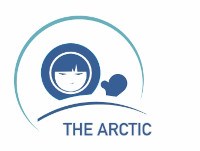Globalization has had numerous impacts on resource dependent communities in the circumpolar North. Most noticeable in Arctic economies today is the prevalence of resource extracting industries and related economic activities. This has led in many places of the Arctic to the establishment of so-called "single industry towns", often in combination with industrial megaprojects. The characteristics of these towns are often described as socioeconomic main characteristics, specific economic characteristics, and specific demographic and cultural characteristics.
Many of these "single industry towns" share the following characteristics: Built during or after the 1960's, with fewer than 30 000 citizens, isolated and dominated by one single industry. Often the single industry is resource or resource extraction based. These villages are planned from a distant political or economic center – and highly dependent on supplies from the outside, they are as such not sustainable and show a degree of instability. This development of the industrialization of the circumpolar North began at the end of 19th and beginning of twentieth century. It has especially accelerated in many countries during or after WW2.
Human development is therefore affected by large industrial development in resource extraction and energy production. The Arctic Human Development Report states that the economic activity of Arctic countries is characterized by the large-scale exploitation of metallic minerals, precious metals, hydrocarbons, and precious and semi-precious stones. The formal economy of Arctic countries is largely based on this type of large-scale resource extraction activity, typically of non-renewable resources, having implications both on macro and micro scale, micro being effects on individuals, families and businesses and macro a nation as a whole.
Mining is for example of "capital-intensive nature" that also affects ownership structures. It creates a capital dependency requiring access to huge amounts of "free" capital. Usually, large multinational or state-run corporations engage in this type of activity as they have the economic capacity as well as manpower and knowledge to perform "megaprojects" related to resource-extraction. Economy of scale or local businesses do not typically run these types of activities.
The AHDR concludes: "While the industrial-scale natural resource exploitation creates considerable wealth, these activities are mainly carried out to supply markets outside the Arctic regions. A few large corporations dominate the extraction activities, and some of them are present in several Arctic countries. Where the massive riches are destined for export and only a fraction of the income and profits remains. Profit detainment or better wealth-leakage and property rights at local level being the key challenges here, differing e.g. to local production of shoes or any small-scale industrial activity on local level where things are produced for a limited local market, consumed and utilized there."
Demand is derived from world consumption and world investment. In terms of the AHDR on community viability this implies a connection on macro scale to global "bust and boom" cycles. The further the consumption of certain resources in places outside the Arctic goes and the more capital is made available for investment, the higher is the actual demand.
This can be both beneficial and detrimental, as it could foster development of resource extracting activities and building of further infrastructure in the North in times of "boost" when capital is readily available. But it can also lead to the abandonment of activities in times of "bust" and according downturn in socio-economic development, when capital is retreated and demand for supply is low.
There is the ultimate threat of a depletion of resources ending all economic activities and consequently significantly affecting the Arctic economies largely based on this. This is different to industries or economic activities based on renewable resources that in theory are unlimited.
Many places in the Arctic have seen severe environmental damage due to megaprojects activities. Here the interplay of retaining wealth / profits at local level, political entrepreneurship and systematic economic development with a sustainability factor at local and macro level is crucial. The wealth needs to be invested and "transformed" into investments in infrastructure and other, more sustainable forms of industries and activities that on the long run help to get away from the mega activities.
The low level of innovation in resource extracting industries is somewhat contrasting a tendency of post-industrialism in globalized societies to foster knowledge-based industries. Human-capital investment and preparation for a knowledge based culture / industry seems often to be more sustainable and future-oriented than maintaining on activities such as mining.
Sources: Arctic Human Development Report Megatrends The Economy of the North Mining in the North Circumpolar World








